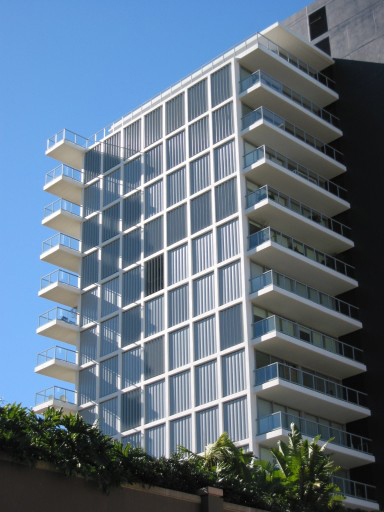Frank Gehry says today’s architecture is “pure shit”*

You have to agree with him, of course, but with a very important caveat. Based on the quotes, Frank actually did suggest that what he means is different from what his tired off-the-cuff comment sounds like.
The fundamental problem is that ARCHITECTURE is, if you like, the figure that needs to exist against a background. If so, then as Frank infers it should be architectural art brought to bear on the important monuments and landmarks of a city – a city that is otherwise made up of buildings more subservient to their role as the necessarily self-effacing setting. Such 'background buildings' might be made by architects, but more in the tradition of a vernacular. In other words, architecture is not defined simply by the fact that it was designed by a journeyman architect.
If that proposition holds, then Frank is describing a situation particular to architects and their values in the contemporary era. The profession and the schools today make every architect aspire to differentiate every building as if it is ARCHITECTURE, and demean the relative anonymity of the journeyman building. That makes every outwardly self-promoting building (other than appropriate monuments and landmarks) bad architecture. Because such buildings are the major proportion of contemporary architectural production, Frank may well be right in his estimate of 98%.
So what is a journeyman architect to do? I would say concentrate on making the experience of ordinary buildings continuously delightful, pleasantly surprising at the level of intimacy that affirms everyday life. Every such building, done well, can contribute to wellbeing, and more. A good school room can enhance learning, a good hospital can accelerate healing, a good workplace can promote cooperation while achieving greater productivity, a good apartment can make you feel special every time you walk into it. That sort of architecture requires very significant knowledge and skill, but also requires a certain humility.
That Frank is not humble in response to an innocent but poorly thought out question, should not detract from his essentially incisive reflection on a profession that should be.
* The headline is from Architecture and Design, but the press conference in Spain is widely reported. Read The Independent version, here.

You have to agree with him, of course, but with a very important caveat. Based on the quotes, Frank actually did suggest that what he means is different from what his tired off-the-cuff comment sounds like.
The fundamental problem is that ARCHITECTURE is, if you like, the figure that needs to exist against a background. If so, then as Frank infers it should be architectural art brought to bear on the important monuments and landmarks of a city – a city that is otherwise made up of buildings more subservient to their role as the necessarily self-effacing setting. Such 'background buildings' might be made by architects, but more in the tradition of a vernacular. In other words, architecture is not defined simply by the fact that it was designed by a journeyman architect.
If that proposition holds, then Frank is describing a situation particular to architects and their values in the contemporary era. The profession and the schools today make every architect aspire to differentiate every building as if it is ARCHITECTURE, and demean the relative anonymity of the journeyman building. That makes every outwardly self-promoting building (other than appropriate monuments and landmarks) bad architecture. Because such buildings are the major proportion of contemporary architectural production, Frank may well be right in his estimate of 98%.
So what is a journeyman architect to do? I would say concentrate on making the experience of ordinary buildings continuously delightful, pleasantly surprising at the level of intimacy that affirms everyday life. Every such building, done well, can contribute to wellbeing, and more. A good school room can enhance learning, a good hospital can accelerate healing, a good workplace can promote cooperation while achieving greater productivity, a good apartment can make you feel special every time you walk into it. That sort of architecture requires very significant knowledge and skill, but also requires a certain humility.
That Frank is not humble in response to an innocent but poorly thought out question, should not detract from his essentially incisive reflection on a profession that should be.
* The headline is from Architecture and Design, but the press conference in Spain is widely reported. Read The Independent version, here.




